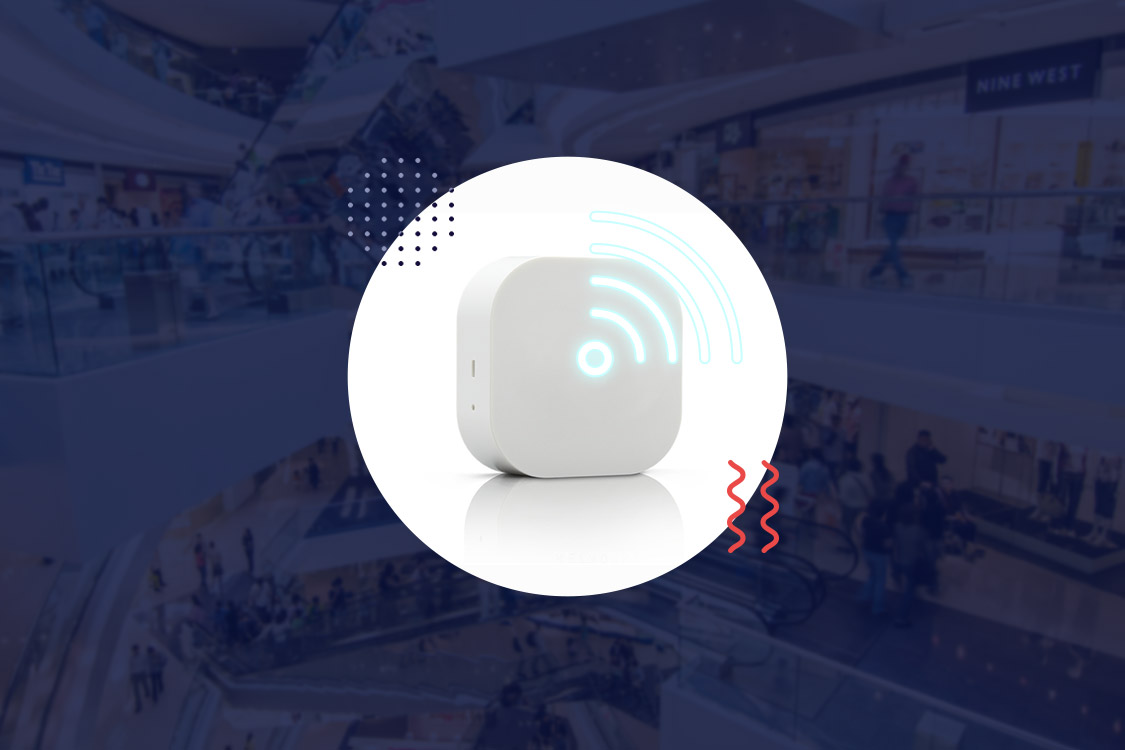What are BLE Beacons?
A Bluetooth Low Energy (BLE) Beacon is a small device that transmits a unique identifier to nearby Bluetooth-enabled devices. Beacons use Bluetooth low energy technology to broadcast their presence as well as transmit additional data. This additional data can include location-based information and contextual marketing messages.
Bluetooth Low Energy (BLE) Beacon are becoming increasingly common and their use cases are growing rapidly. They typically operate with very low power requirements and at short transmission ranges of just a few meters. Due to their small size and ability to operate for over a year on a standard coin cell battery, beacons are easily deployable in many indoor environments.
How Do Beacons Work?
Bluetooth Low Energy (BLE) Beacon operate by continuously broadcasting an advertising packet over Bluetooth. This packet includes a universally unique identifier (UUID) that is specific to the organization deploying the beacon. Additionally, beacons can broadcast a major and minor value which can be used to identify smaller groups or even individual beacons.
When a mobile device with the necessary Bluetooth and location services enabled comes within range of a beacon, the advertising packet is detected. A mobile app working with the beacon notifications can then determine the device’s proximity to that beacon based on the signal strength. Apps can use this detected proximity combined with the beacons’ UUID, major, and minor values to determine the device’s precise location.
Common BLE Beacon Use Cases
Retail shops and malls were among the earliest adopters of BLE beacon technology. Beacons placed throughout stores allow apps to detect when customers enter and can then push targeted offers, promotions or product information. Shoppers get personalized deals, while retailers gain valuable insights into foot traffic patterns.
Museums and other visitor attractions also deploy extensive beacon networks. Apps can provide location-based information, interactive maps and audio guides tailored to exhibits nearby. This enhances the visitor experience while reducing staffing needs for information desks.
Airports, convention centers and other large venues use beacons to direct travelers and attendees to departure gates, conference rooms or events. Push notifications replace static signage and enable one-to-one engagement. Wayfinding apps lead smoothly between destinations indoors.
Many universities have begun placement of beacons on campus. Apps integrate with beacons to offer directions, emergency alerts, parking availability and other location-centric services for students and visitors. Beacons also see growing use for asset tracking within hospitals, factories and warehouses.
Beacon Adoption is Growing Rapidly
As they are low cost, easy to deploy and yield actionable location data, analysts forecast that the Bluetooth Low Energy(BLE) Beacon will grow substantially over the next five years. Some estimates suggest the beacon hardware and software market alone could reach $10 billion by 2022.
Major mobile platforms now offer built-in operating system support for detecting beacons in the background without any additional apps required. Over 80% of smartphones sold globally now have the necessary Bluetooth 4.0 Low Energy capabilities to detect beacons. As critical mass builds for both beacons and compatible devices, their opportunities for deployment are multiplying across many industries.
Looking ahead, integration of other connectivity standards like WiFi and 5G will see beacons playing an increasingly important role in hyper-local engagement and indoor navigation. Further miniaturization and costs reductions will also likely spur adoption in new sectors beyond retail and transportation over the next few years. If privacy standards are upheld and interoperability improves, Bluetooth Low Energy (BLE) Beacon have great potential to become a ubiquitous part of daily life through contextualized mobile experiences.
*Note:
1. Source: Coherent Market Insights, Public sources, Desk research
2. We have leveraged AI tools to mine information and compile it

